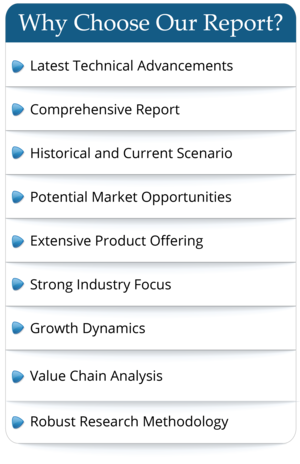Global Synthetic Tartaric Acid Market Research Report 2023
SKU ID : QYR-23758276 | Publishing Date : 15-May-2023 | No. of pages : 106
Tartaric acid is used in many applications, food and beverages, wine, pharmaceutical, construction, cosmetic and chemical industry. For food, beverage and wine, tartaric acid is used for acidifying and enhancing the flavors of them. In pharmaceutical industry, tartaric acid is used as an excipient to prepare antibiotics, pills, tablets and some other medicines for heart disorders. In construction sector, tartaric acid is used in gypsum and cement to retard drying, and as a fluidizer of ceramics. In chemical industry, tartaric acid is used for photography, polishing in electronics and plastics industries. For cosmetic, tartaric acid is used as a basic compound in some natural body creams.
Tartaric acid mainly has three types: L-Tartaric Acid, D-Tartaric Acid, DL-Tartaric Acid. L-Tartaric acid is produced in the largest amount. D(-)-tartaric acid is more and more widely used in pharmaceuticals and food industry. DL-Tartaric Acid is widely used in many fields such as foodstuff, medicine, chemical industry and light industry etc.
The global Synthetic Tartaric Acid market was valued at US$ 365.7 million in 2022 and is anticipated to reach US$ 585.9 million by 2029, witnessing a CAGR of 6.5% during the forecast period 2023-2029. The influence of COVID-19 and the Russia-Ukraine War were considered while estimating market sizes.
North American market for Synthetic Tartaric Acid is estimated to increase from $ million in 2023 to reach $ million by 2029, at a CAGR of % during the forecast period of 2023 through 2029.
Asia-Pacific market for Synthetic Tartaric Acid is estimated to increase from $ million in 2023 to reach $ million by 2029, at a CAGR of % during the forecast period of 2023 through 2029.
The key global companies of Synthetic Tartaric Acid include Alvinesa, Sagar Chemicals, RANDI GROUP, Caviro Distillerie, Australian Tartaric Products, Tarac Technologies, Tartaric Chemicals, Distillerie Mazzari and Distillerie Bonollo, etc. In 2022, the world's top three vendors accounted for approximately % of the revenue.
Report Scope
This report aims to provide a comprehensive presentation of the global market for Synthetic Tartaric Acid, with both quantitative and qualitative analysis, to help readers develop business/growth strategies, assess the market competitive situation, analyze their position in the current marketplace, and make informed business decisions regarding Synthetic Tartaric Acid.
The Synthetic Tartaric Acid market size, estimations, and forecasts are provided in terms of output/shipments (MT) and revenue ($ millions), considering 2022 as the base year, with history and forecast data for the period from 2018 to 2029. This report segments the global Synthetic Tartaric Acid market comprehensively. Regional market sizes, concerning products by type, by application and by players, are also provided.
For a more in-depth understanding of the market, the report provides profiles of the competitive landscape, key competitors, and their respective market ranks. The report also discusses technological trends and new product developments.
The report will help the Synthetic Tartaric Acid manufacturers, new entrants, and industry chain related companies in this market with information on the revenues, production, and average price for the overall market and the sub-segments across the different segments, by company, by type, by application, and by regions.
By Company
Alvinesa
Sagar Chemicals
RANDI GROUP
Caviro Distillerie
Australian Tartaric Products
Tarac Technologies
Tartaric Chemicals
Distillerie Mazzari
Distillerie Bonollo
Pahi
Vinicas
Tártaros Gonzalo Castelló
Omkar Specialty Chemicals
Yantai Taroke Bio-Engineering
Ninghai Organic Chemical Factory
Changmao Biochemical Engineering
Hangzhou Bioking Biochemical Engineering
Hangzhou Regin Bio-tech
Segment by Type
Grapes & sun-dried raisins
Maleic anhydride
Others
Segment by Application
Wine, Food & Beverage
Pharmaceutical
Cosmetics
Construction
Chemical
Production by Region
North America
Europe
China
India
Australia
Consumption by Region
North America
U.S.
Canada
Europe
Germany
France
U.K.
Italy
Russia
Asia-Pacific
China
Japan
South Korea
China Taiwan
Southeast Asia
India
Latin America
Mexico
Brazil
Core Chapters
Chapter 1: Introduces the report scope of the report, executive summary of different market segments (by region, by type, by application, etc), including the market size of each market segment, future development potential, and so on. It offers a high-level view of the current state of the market and its likely evolution in the short to mid-term, and long term.
Chapter 2: Detailed analysis of Synthetic Tartaric Acid manufacturers competitive landscape, price, production and value market share, latest development plan, merger, and acquisition information, etc.
Chapter 3: Production/output, value of Synthetic Tartaric Acid by region/country. It provides a quantitative analysis of the market size and development potential of each region in the next six years.
Chapter 4: Consumption of Synthetic Tartaric Acid in regional level and country level. It provides a quantitative analysis of the market size and development potential of each region and its main countries and introduces the market development, future development prospects, market space, and production of each country in the world.
Chapter 5: Provides the analysis of various market segments by type, covering the market size and development potential of each market segment, to help readers find the blue ocean market in different market segments.
Chapter 6: Provides the analysis of various market segments by application, covering the market size and development potential of each market segment, to help readers find the blue ocean market in different downstream markets.
Chapter 7: Provides profiles of key players, introducing the basic situation of the key companies in the market in detail, including product production/output, value, price, gross margin, product introduction, recent development, etc.
Chapter 8: Analysis of industrial chain, including the upstream and downstream of the industry.
Chapter 9: Introduces the market dynamics, latest developments of the market, the driving factors and restrictive factors of the market, the challenges and risks faced by manufacturers in the industry, and the analysis of relevant policies in the industry.
Chapter 10: The main points and conclusions of the report.
Frequently Asked Questions
- By product type
- By End User/Applications
- By Technology
- By Region

 Pre-order Enquiry
Pre-order Enquiry Request Free Sample
Request Free Sample


 Request Sample
Request Sample Request Discount
Request Discount










